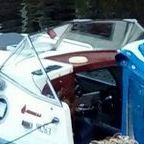Oh stoppit,you're making me blush!
The main problem was disposing of the dirty fuel,that's why after several filterings I tipped it back in the tank.Can't pour it down the drain,the council tip won't take it,and the marina would charge.I forgot to add that,the marina would only take a few litres,and not the total amount.
The bit of knowledge I have of boating comes from three years of doing my own maintenance,making lots of cock ups and seeking advice from CWF.
There are some "smart alec" answers,some theories,and in and among,some first rate advice from qualified and experienced people who generously share their expertise. I don't take everything on here as "gospel"but reading all answers,and giving them serious thought,I have found ways of tackling my boaty problems.
Please don't go stamping off muttering unkind words about CWF,but persevere,it is worth it.




